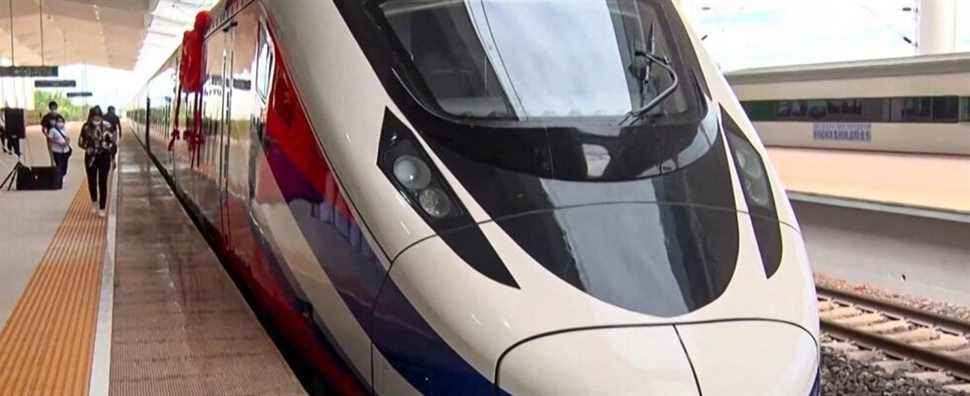The official Chinese press (link to an article in English) made its headlines on Friday, December 3. She first salutes the successful completion of a gigantic project: 1,035 km of high-speed line between southern China, Kunming, and Vientiane, the capital of Laos, this landlocked country of seven million inhabitants. in South Asia, without access to the sea.
For Chinese construction companies, it is a success, because the challenge was important: the area is mountainous, difficult to access, with risks of flooding and strong winds. More than 250 structures had to be built, including more than 75 tunnels and 160 bridges. Two thirds of the line are affected by these constructions. And then of course, there are the stations: 21 built in total, half on the Chinese side, half on the Laotian side. All while respecting the deadlines announced at the start, a little over five years of work.
The result of the races is an eight hour journey in ultra modern red and white trains. Including only three hours between the border and the capital of Laos Vientiane, where it takes two days by road! And for Laos, it’s a revolution, a kind of leap into modernity. Do you know how many kilometers of rail network the country had until now? Four kilometers in all and for everything! And overnight, a high-speed line for hundreds of kilometers!
There is little doubt that this benefits China: it is a commercial outlet, and above all it is the first stone of a much more ambitious project, the Pan-Asian line. You have to look at a map to understand: the objective is to continue this line to the South, beyond Laos, to Thailand then the great commercial hub of Singapore, and then to connect everything to northern China and to the rail links that already exist to Russia and Europe. It is a domino in a giant chessboard, the great Chinese project of the “new silk roads”. And it is also a political symbol: the Chinese big brother comes to help the small neighbor, the two regimes claiming to be communist.
For Laos, it’s a different story. At first glance, a spectacular opening up and the possibility of accessing the Chinese market: this is the immediate objective, trade in goods, four million tonnes in ten years according to the World Bank. And then the hope of developing tourism, an already booming resource in Laos. But we can still ask questions about the interest of such a modern project for a country which is still very agricultural, and which would especially need more developed local infrastructure. It should be noted in passing that more than 4,000 Laotian farmers were expropriated to build the line.
And then there is the bill: six billion dollars in total including more than a billion lent by China to Laos. And no one really knows how Vientiane will be able to reimburse. Especially since the Laotian regime is very opaque. This is the whole problem with these major Chinese projects all over the world, especially in Africa: the countries concerned are deeply in debt and therefore find themselves with their hands tied, held by Beijing.
